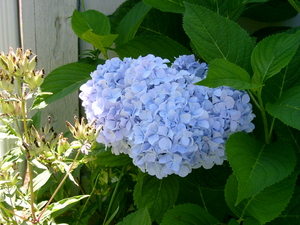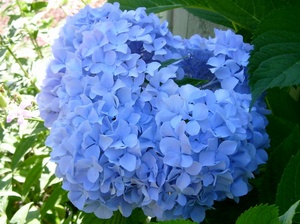Hydrangeas are one of my favorite flowering plants, especially when they are a beautiful shade of sky-blue. I first noticed blue hydrangeas while traveling through the Carolinas, and I was very envious of the owners of these beautiful azure plants that were dotted throughout many neighborhoods and rural yards. I thought maybe it was a flowering plant that could only grow in the southern states, since I had never noticed them in my area of the country, but years later I was surprised to find beautiful blue hydrangeas blooming next to my rented home. I wanted to propagate the single plant I found and grow many more.
While preparing to move out of the rented home, I learned how to propagate hydrangeas, and I was able to create several new plants from cuttings. It really is very easy to propagate hydrangeas, and it is a great way to save money on landscaping as well as a fantastic way to share the beauty of beautiful flowering plants with family, neighbors, and friends.
Precautionary Statement
Read the label of the rooting hormone you choose before beginning to propagate hydrangeas or any other plants. Be certain to look for any precautionary statements on the label regarding use and safety before using to propagate hydrangeas using the following list of supplies and instructions.
Necessary Supplies to Propagate Hydrangeas
To propagate hydrangeas you will require three cuttings that are five to six inches in length and about one-fourth of an inch in diameter. It is possible to propagate hydrangeas in water, but I prefer a soil mixture method, and you will also need rooting hormone. Schultz makes a product called Take Root, and that is what I use to propagate my hydrangeas and other plants. Also needed to propagate hydrangeas is vermiculite, perlite, sphagnum peat moss, a large plastic lid or a disposable plate, and three pots that are four-inches in diameter. You will also require a tray or saucers to hold the pots, scissors, and water to hydrate the developing plants and roots. I use a long shallow plastic storage container to hold the pots when I propagate plants, and I use the lid to hold the rooting hormone during application.
Procedure to Propagate Hydrangeas
Begin by creating an equal mixture of perlite, vermiculite, and sphagnum peat moss, and fill the starter pots approximately one-half inch from the top. Place the pots in a predestinated shallow container or tray, and add water to moisten the soil mixture in preparation for planting the hydrangeas.
Next, remove the lower leaves of each cutting. This will give the hydrangeas a better chance of survival since the new roots will have less area to feed while forming and growing. Place a small amount of rooting hormone on the container lid or a disposable plate, and after moistening the stem end of each cutting, gently roll it in the rooting hormone. Be certain to cover the cut end of the stem as well.
Lastly, use a finger to poke a hole in the soil mixture of each pot, and plant the prepared cuttings. Keep the plants in a shady indoor location that offers plenty of humidity. Covering the tray loosely with clear plastic wrap helps hold in the moisture and encourage growth.
When striving to propagate healthy hydrangeas with a strong root system, water the growing plants regularly to keep the soil evenly moist, but do not saturate it. They should be watered two or three times each week or as often as necessary.
To propagate hydrangea cuttings it will take approximately six weeks for roots to grow full and strong enough to plant the cuttings outdoors, but before the hydrangeas are planted outdoors it is important to harden them near the location where they will be planted. Hardening means acclimating the plants to the wind and other outdoor conditions that are favorable to their growth. To properly harden the plants, place the tray of hydrangeas outdoors each day while gradually increasing the amount of time they spend outdoors. Soon they will be ready to plant in their permanent location.
Check the roots of one of the hydrangeas to be sure they have developed a good root system before transplanting. Once they are ready to plant, prepare and tend to the soil according to the color of blooms you want to attain, and plant them in a grouping. An article entitled, How to Keep Blue Hydrangeas Blue, explains in detail how to feed and care for hydrangeas according to color. You can propagate countless cuttings to create a yard filled with beautiful hydrangeas.







